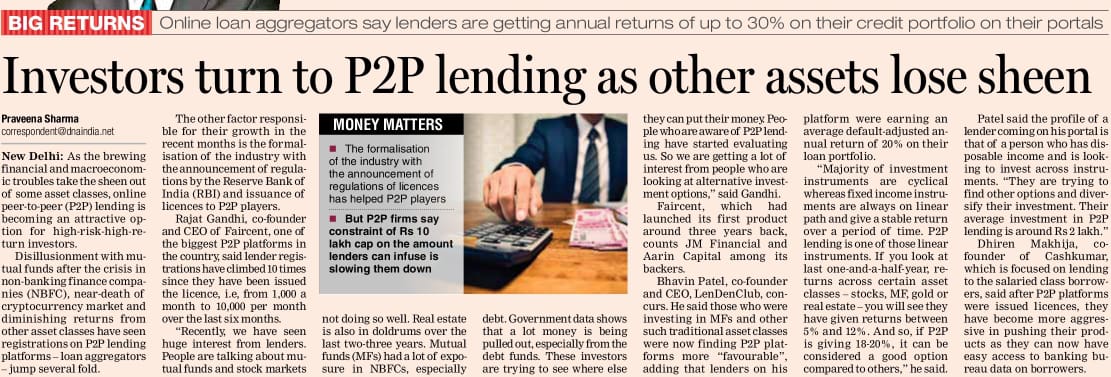Investors turn to P2P lending as other asset classes lose sheen
As the brewing financial and macroeconomic troubles take the sheen out of some asset classes, online peer-to-peer (P2P) lending is becoming an attractive option for high-risk-high-return investors.
Disillusionment with mutual funds after the crisis in non-banking finance companies (NBFC), near-death of cryptocurrency market and diminishing returns from other asset classes have seen registrations on P2P lending platforms – loan aggregators – jump severalfold.
The other factor responsible for their growth in the recent months is the formalisation of the industry with the announcement of regulations by the Reserve Bank of India (RBI) and issuance of licences to P2P players.
Rajat Gandhi, co-founder and CEO of Faircent, one of the biggest and the oldest P2P platforms in the country, told DNA Money that lender registrations have climbed 10 times since they have been issued the licence, i.e, from 1,000 a month to 10,000 per month over the last six months.
"Recently, we have seen huge interest from lenders. People are talking about mutual funds and stock markets not doing so well. Real estate is also in doldrums over the last two-three years. Mutual funds (MFs) had a lot of exposure in NBFCs, especially debt. Government data shows that a lot money is being pulled out, especially from the debt funds. These investors are trying to see where else they can put their money. People who are aware of P2P lending have started evaluating us. So we are getting a lot of interest from people who are looking at alternative investment options," said Gandhi. Faircent, which had launched its first product around three years back, counts JM Financial and Aarin Capital among its backers.

Related Articles
-
P2P lending platform Faircent to look for more partners
Jun 11, 2018
-
Digital lending to become $1 tn opportunity in India over next 5 years: BCG
Jul 23, 2018
-
Faircent secures pre series ‘A’ funding
Jun 16, 2015
